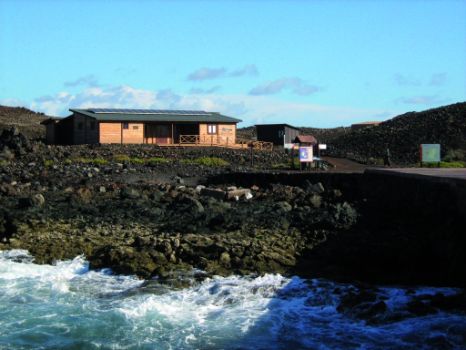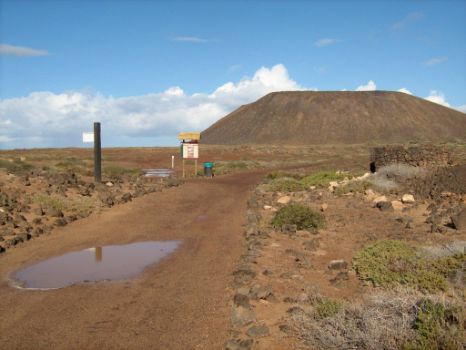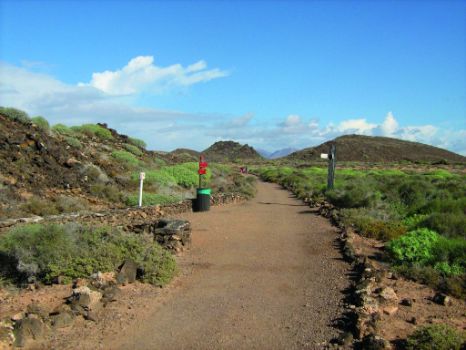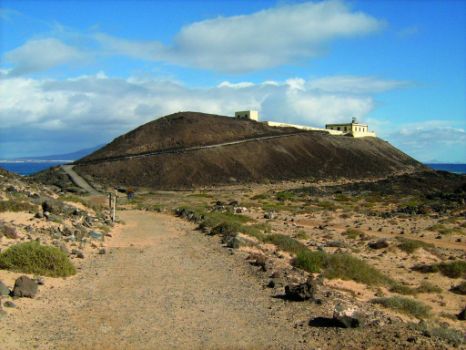Net of Natural
Trails

Stage 1: Isla de Lobos
Description
To the Lighthouse of Martiño
The Nature Trail begins with a walk through Isla de Lobos, located northeast of Fuerteventura, a small island which in past centuries was home to a large colony of monk seals to which the island owes its name (sea lions). The route runs through this mythical island from south to north, from El Muelle (the pier) to the lighthouse of Martiño.

From Corralejo, in the north of Fuerteventura, we will depart by boat to the island of Lobos, which is the first stretch of this Nature Trail. The trail crosses from south to north this island, which was once populated by an important colony of monk seals (Monachus monachus), and is located just two kilometers northeast off the coast of Fuerteventura.
The trail begins at the pier of Lobos Island, called El Muelle, where a boat arrives regularly from Corralejo. There is a visitor center at El Muelle - displaying information about the island - which belongs to the Natural Park of Corralejo. A little to the east of the information center, there is a camping area, as well as the houses of El Puertito.

We begin this section of the trail by taking the path in a northerly direction until we come to the Concha (Shell) beach, which has been given its name by the local population owing to its shape, even though the actual name of the beach is Calera beach, because in the vicinity of the beach there is a lime kiln (Calera) which was used for building the lighthouse of Martiño.
Continuing our way in a northerly direction, we come across an intersection from which we can follow a path going to the Marrajo salt works. In this section, we will go through vegetation areas populated with balsam spurge (Euphorbia balsamifera) and aulaga (Calicotome spinosa), and we will see to the left La Caldera mountain, a volcanic cone of relatively recent origin which is the highest point of the island at 127 m above sea level.
Once we leave behind us the junction with the path that goes to La Caldera, we can see on the left Llano de Los Labrantes (Los Labrantes plain), where Portuguese workers settled in 1860 in order to build the lighthouse, and where we can still see some remains of small dry stone huts.

Later on, the trail goes between Morro de Las Pilas and Morro Escarchado, always through vegetation typical of the island. Once we have left behind us Morro Colorado, we can make out in the distance the lighthouse on Martiño Mountain and the end of the trail. First we go past the salt works near the lighthouse. Before going up Martiño Mountain in order to reach the lighthouse, there is a junction where we can decide whether to return to El Muelle by the same route or take a path that crosses the island from north to south on its eastern side.
Profile
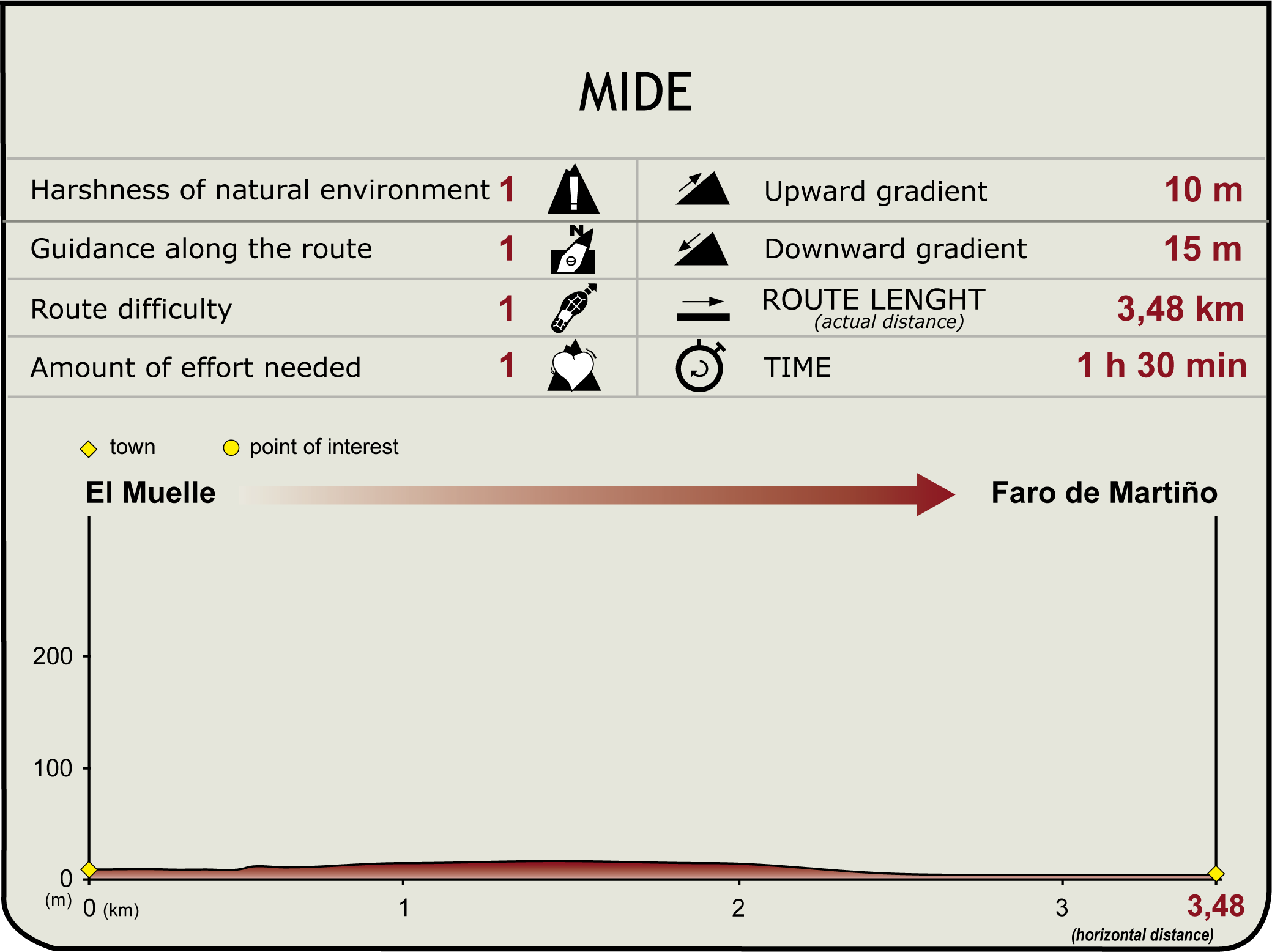
(Calculated according to the MIDE criteria for an average excursionist with a light load)
Highlights
Further information
Corralejo Natural Park
Lobos Island is named after the ancient inhabitants of the island: the monk seals (Monachus monachus), also known as sea lions; in the past, there was a large population of sea lions on the island, but they were decimated by the Portuguese and Spanish conquistadors, who used the fat and skin of these animals. The entire island is a natural paradise included in Parque Natural de Corralejo - named as a natural park in 1994 - which is currently home to more than 130 plant species, among them numerous endemic species.
This small island, which covers an area of 467.9 ha and has a 13.7 km shoreline, is located in the Bocaina Channel, 2 km from Fuerteventura and 8 km from Lanzarote, and, like the dunes of Corralejo, has been named a Special Protection Area for Birds (SPA) within the framework of the Natura Network 2000. Among the avian species that live on the island of Lobos, the European Herring Gull (Larus argentatus) and the Cory’s Shearwater (Calonectris diomedea) are particularly worth mentioning.
Corralejo Natural Park has a total area of 2,700 ha and is located in the north of Fuerteventura, just 5 mi from Corralejo. This dune area has been created as a result of wind action, which has dragged the sand to the coast, where we can see a succession of magnificent beaches and some rocky stretches.



